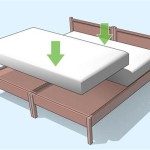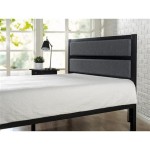What Is The Softest Bedding?
The pursuit of the perfect night's sleep often leads us to the search for the softest bedding. After all, a comfortable bed can make a significant difference in the quality of our rest. But what exactly constitutes "softest bedding"? This seemingly simple question can quickly become complex, as softness is subjective and influenced by personal preference, fabric type, and even the way the bedding is woven and constructed.
The quest for softness involves understanding the various factors that contribute to a comfortable sleep experience. From the feel of the fabric against our skin to the way it drapes and conforms to our bodies, each element plays a role in creating that luxurious and cozy feeling. This article delves into the characteristics of soft bedding, exploring the different materials, weaves, and features that contribute to a heavenly sleep haven.
The Role of Fabric
The fabric choice is undeniably the foundation of softness in bedding. Different materials have distinct properties, each contributing to a unique sleep experience. Here's a breakdown of some popular options and their softness attributes:
Cotton
Cotton, a natural fiber, is renowned for its breathability, absorbency, and softness. It's a versatile material available in various weaves and finishes, each affecting its softness. For instance, Egyptian cotton, known for its long, strong fibers, tends to be softer and smoother than regular cotton. Percale cotton, with its tight weave, offers a crisp and cool feel, while sateen cotton, with a smoother surface, provides a luxurious, silky touch.
Silk
Silk, a luxurious fiber derived from silkworms, is renowned for its exceptional softness and smooth texture. Its smooth surface, often described as slippery, promotes a cool and comfortable sleep experience. However, silk's delicate nature makes it prone to wrinkling and requires careful handling.
Linen
Linen, a natural fiber derived from flax, is known for its durability, breathability, and unique texture. While linen doesn't feel as soft as silk or certain types of cotton, its natural fibers offer a distinctive, slightly rough texture that can be comforting and inviting. Linen's ability to regulate temperature makes it a suitable choice for warm climates.
Bamboo
Bamboo, a fast-growing and sustainable plant, is increasingly popular as a fabric for bedding. Its natural softness and breathable properties make it a comfortable choice for sensitive skin. Bamboo fabric tends to be hypoallergenic and moisture-wicking, offering a cool and comfortable sleep experience.
Beyond Fabric: Weave and Construction
The way a fabric is woven and the construction of the bedding itself can significantly impact its softness and overall feel. Here are some key factors to consider:
Weave
The weave of a fabric refers to the way its threads are interlaced. The weave directly affects the fabric's texture and softness. For example, as mentioned earlier, percale cotton, with its tight weave, results in a crisp and cool feel, while sateen cotton, with a smoother weave, offers a luxurious, satiny touch.
Thread Count
Thread count refers to the number of threads per square inch of fabric. While higher thread counts generally indicate a softer and smoother feel, it's important to note that thread count is not the only indicator of softness. Factors like the quality of the cotton and the weave of the fabric also play significant roles.
Filling
The filling of bedding, often found in duvets and pillows, also plays a crucial role in softness. Down filling, with its fluffy and lightweight properties, is renowned for its comfort and warmth. Feather fillings are a more affordable alternative to down, but they may lack the same level of softness and warmth.
Individual Preferences and Considerations
Beyond the technical aspects of fabric, weave, and construction, personal preference plays a significant role in defining "softest bedding." Some individuals prefer crisp and cool bedding, while others gravitate towards the luxurious feel of silk or the comforting warmth of down. Consider these factors when choosing bedding that aligns with your individual needs and preferences:
Skin Sensitivity
For individuals with sensitive skin, natural fibers like cotton and bamboo are often recommended. Their breathable and hypoallergenic properties help minimize irritation and promote comfortable sleep.
Temperature Preferences
The ideal bedding for warmth or coolness depends on personal preference and the climate. Cool and breathable fabrics like linen and percale cotton are suitable for warm climates, while warm and cozy fabrics like down and flannel are better for cooler climates.
Sleeping Style
Consider your sleeping style when choosing bedding. If you toss and turn, a breathable and wrinkle-resistant fabric might be preferable. If you enjoy a more snug and cozy feeling, a duvet filled with down feathers or a soft fleece blanket could be a better fit.
The quest for the "softest bedding" is a personalized journey that involves understanding your preferences and exploring the various fabrics, weaves, and features available. By considering these factors, you can make an informed decision and find the perfect bedding to create a haven for restful nights.
.jpg?strip=all)
The Softest Bedding I Ve Ever Tried Dream Green Diy
What Is The Softest Bedding Fabric Fine Company

14 Softest Sheets In 2024 Tested Reviewed

7 Softest Sheet Sets For 2024 The Good Trade

What Are The Softest Bed Sheets Linenly

How To Choose The Softest Sheet Materials Saatva

Softest Sheets Of 2024 Sleep Foundation

14 Softest Sheets In 2024 Tested Reviewed

What Are The Softest Bed Sheets Fabric Thread Count Design Den

What Are The Softest Sheets On A Budget







